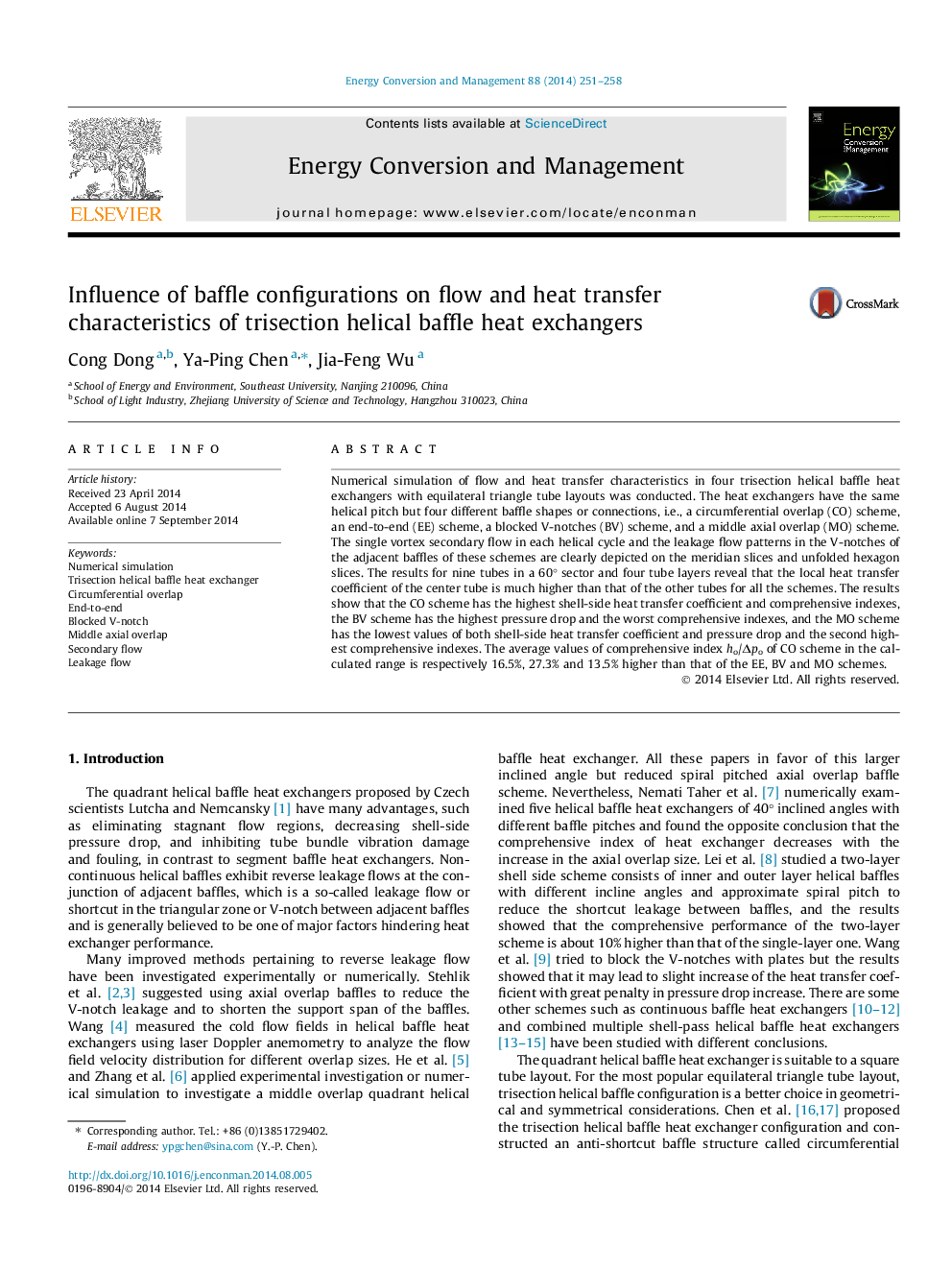| Article ID | Journal | Published Year | Pages | File Type |
|---|---|---|---|---|
| 765683 | Energy Conversion and Management | 2014 | 8 Pages |
•Nephograms with velocity-vector superimposed are proposed on special slices.•Single vortex secondary flow and shortcut leakage patterns are clearly depicted.•Local heat transfer coefficient field and average value on tubes are presented.•Circumferential overlap scheme performs best over other schemes.
Numerical simulation of flow and heat transfer characteristics in four trisection helical baffle heat exchangers with equilateral triangle tube layouts was conducted. The heat exchangers have the same helical pitch but four different baffle shapes or connections, i.e., a circumferential overlap (CO) scheme, an end-to-end (EE) scheme, a blocked V-notches (BV) scheme, and a middle axial overlap (MO) scheme. The single vortex secondary flow in each helical cycle and the leakage flow patterns in the V-notches of the adjacent baffles of these schemes are clearly depicted on the meridian slices and unfolded hexagon slices. The results for nine tubes in a 60° sector and four tube layers reveal that the local heat transfer coefficient of the center tube is much higher than that of the other tubes for all the schemes. The results show that the CO scheme has the highest shell-side heat transfer coefficient and comprehensive indexes, the BV scheme has the highest pressure drop and the worst comprehensive indexes, and the MO scheme has the lowest values of both shell-side heat transfer coefficient and pressure drop and the second highest comprehensive indexes. The average values of comprehensive index ho/Δpo of CO scheme in the calculated range is respectively 16.5%, 27.3% and 13.5% higher than that of the EE, BV and MO schemes.
